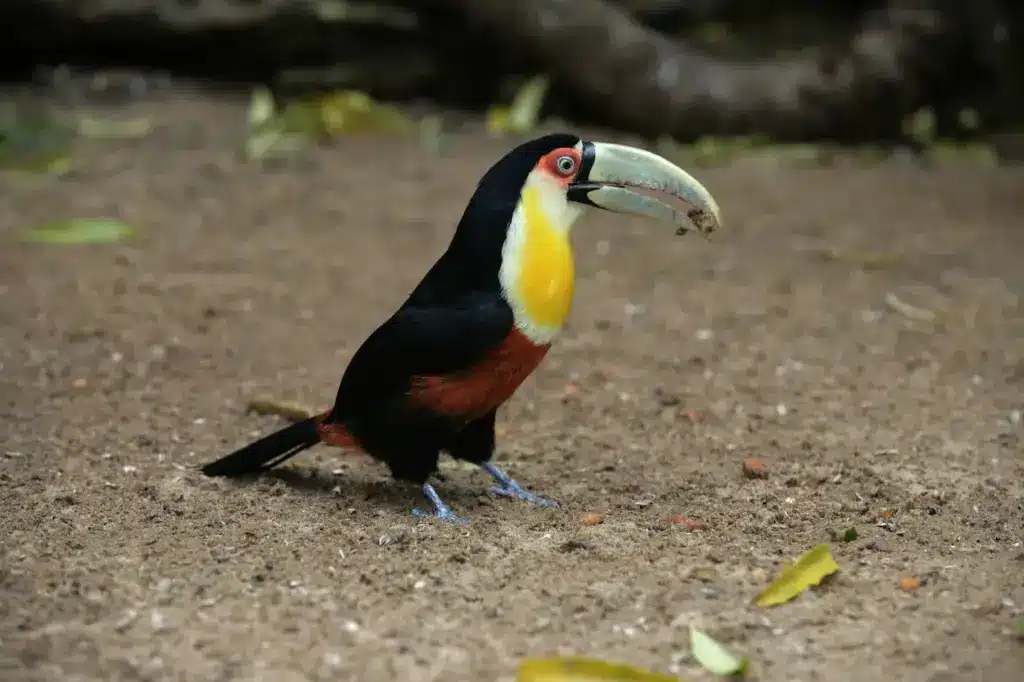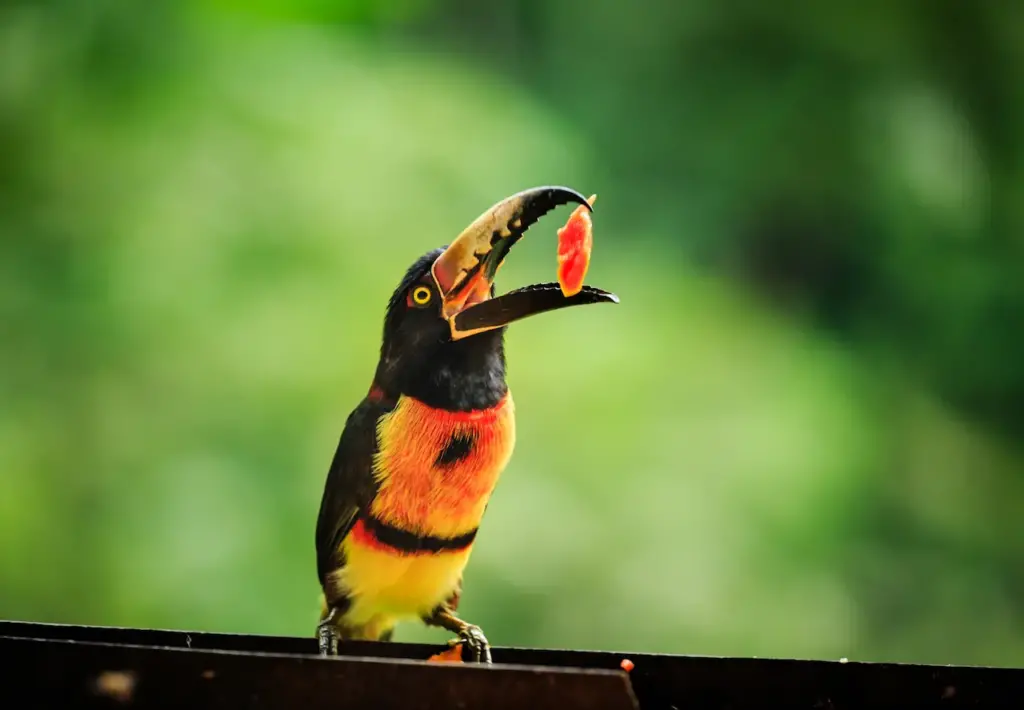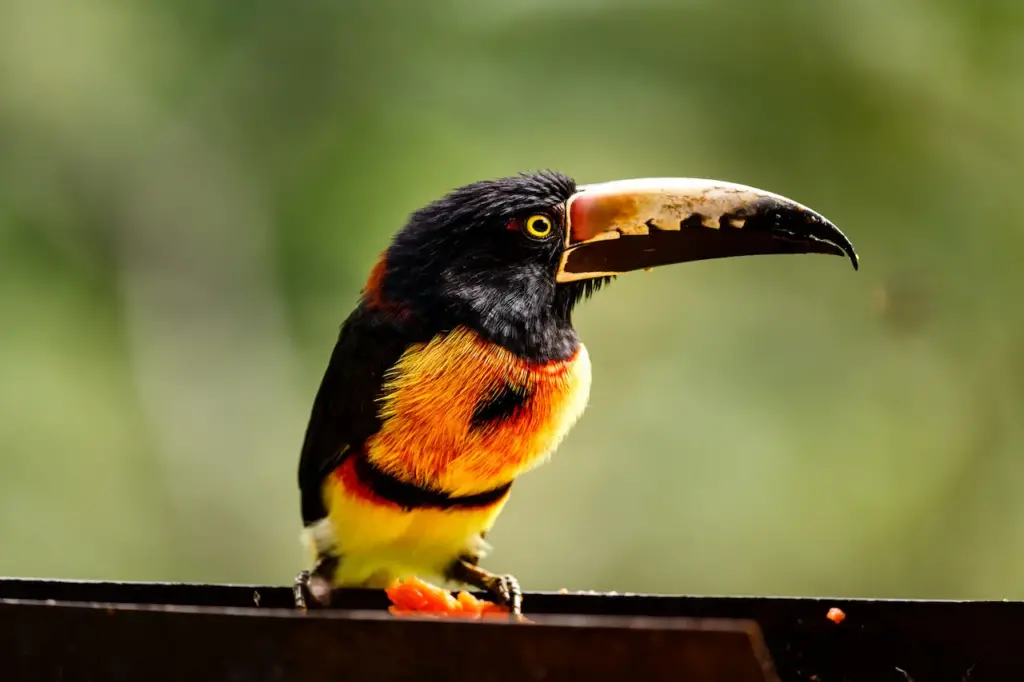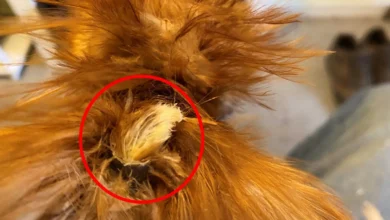The Red-breasted Toucans or Green-billed Toucan (Ramphastos dicolorus) is a South American toucan that occurs naturally throughout central, southern and eastern Brazil, eastern Paraguay and far north-eastern Argentina. It inhabits Alantic forests.
This species is one of the more commonly seen species and is considered to be of least concern by IUCN.

Description
The Red-breasted Toucan’s name is derived from the large area of red feathers found on its belly, while its chest is orangy-yellow with yellow sides.
The bill is mostly pale green and this toucan is, therefore, sometimes referred to as the Green-billed Toucan.
The Red-breasted Toucan is one of the smaller species of large black toucans, weighing approximately 350 grams.
Its bill is also shorter than those of most other toucan species, averaging only 4 inches or 10 cm n length.
They are fairly long-lived with a lifespan around 20 years.

Breeding / Nesting
The mating ritual is a fun-loving affair for toucans, as they throw fruit to one another.
Like all of their other activities, nesting happens high up in hollow areas in trees. The bill is not effective for digging or any other type of extensive excavation work and so they must rely on holes already formed by other means.
The nests are not lined, but the two to four shiny white eggs that are laid each year rest on a few wood chips created while enlarging the opening or on various kinds of regurgitated seeds collected for this purpose. Parents share equally in incubation duties, but rarely sit on the nest for more than an hour at a time and the eggs are often left uncovered. Both parents share in feeding fruit to the babies for up to 8 weeks.
After 16 days the nestlings are born blind, with no trace of down on their pink skin. The bill is unremarkable until about 16 days old when it takes on the distinguishing features of the toucan, and requires up to four months to develop fully. Feathers begin to expand at 4 weeks.
Babies have pads on their elbows that protect their feet by keeping them elevated until they fledge.
Breeding in captivity requires attention to a number of details. Even successful breeders report rates as low as 30% for the incubation of eggs.




